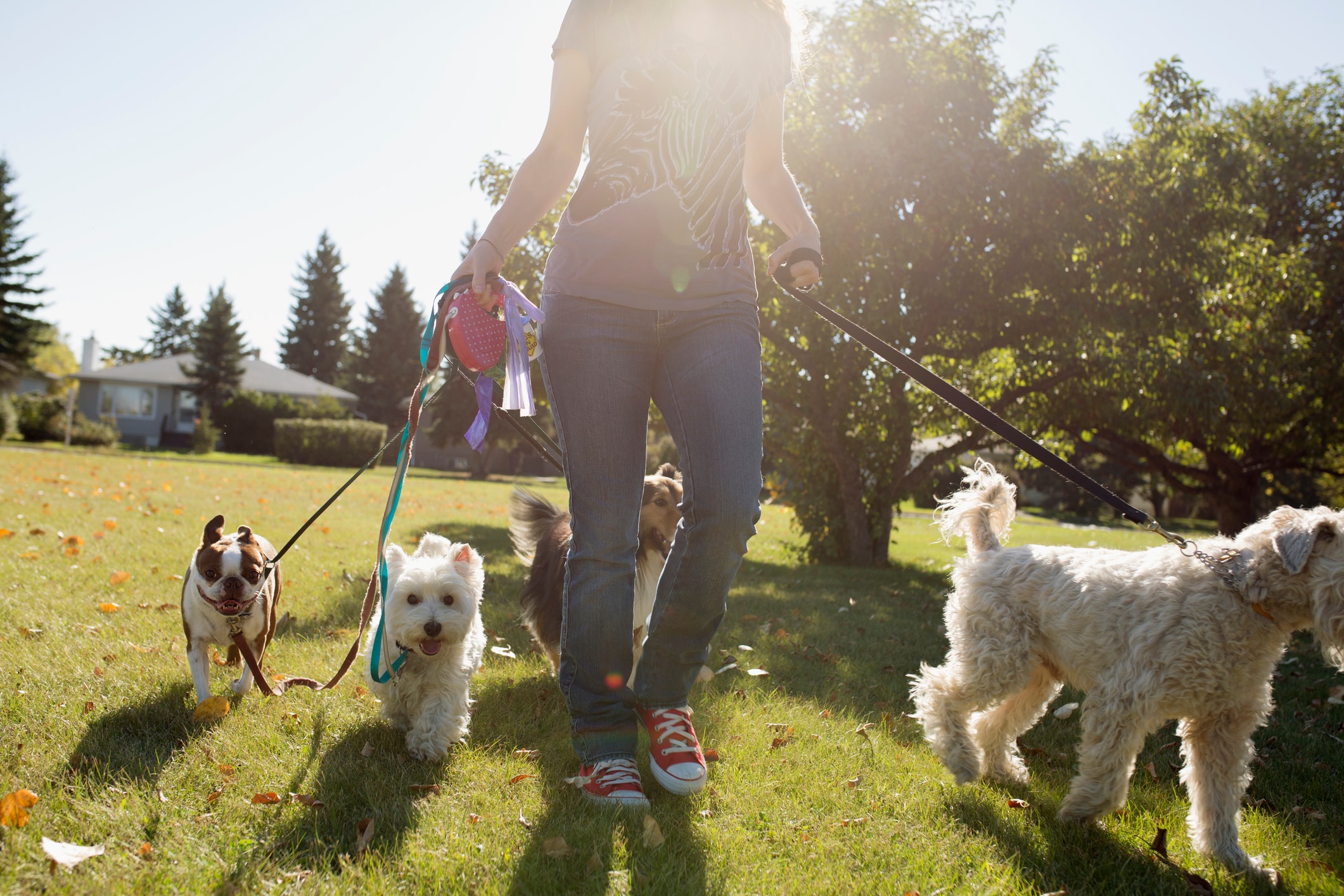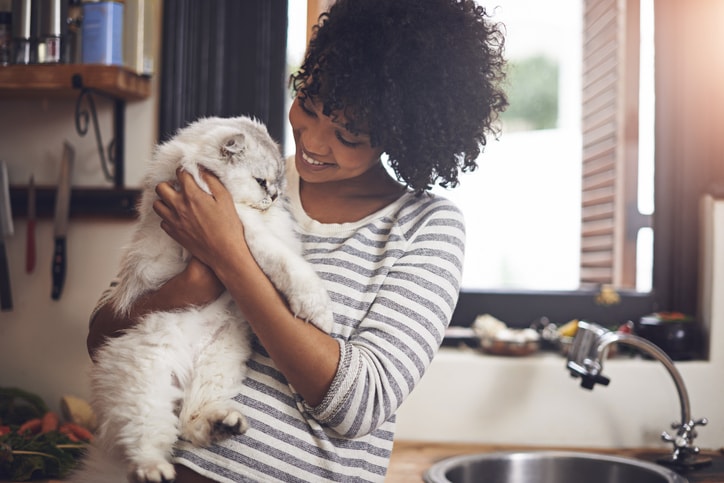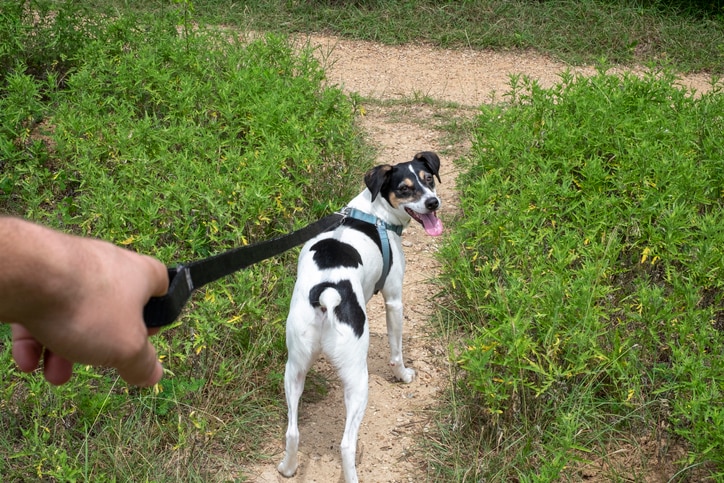For animal lovers with a flexible lifestyle, pet sitting can be an ideal full- or part-time job. And the more people travel, the greater the demand for professionals who provide pet care at the pet owner’s home — which tends to be a happier and less stressful experience for the pet than boarding them while the owner is away.
While pet sitting is not a difficult job, it requires a very specific skill set, says dog trainer Joan Hunter Mayer of The Inquisitive Canine in Santa Barbara, California. She describes an ideal pet sitter as “a good communicator, responsive, professional, transparent with information, gentle with the pet and able to read the animal’s body language.”
Here, questions to anticipate being asked during your pet sitting interview and other ways to prepare in order to land the job.
An ideal pet sitter is “a good communicator, responsive, professional, transparent with information, gentle with the pet and able to read the animal’s body language.”
— Joan Hunter Mayer of The Inquisitive Canine
How to prepare for a pet sitting interview
Going into the job interview, bear in mind these three rules of the road, according to Mayer:
- Provide references without being asked.
- Explain your services clearly.
- Listen to and take note of what the owner wants.
Alice Kerby, a frequent pet sitter based in San Diego, also recommends meeting the pet with their owner. “I always recommend meeting the pet and seeing the home if possible ahead of time,” says Kerby. “I do pet sitting all over the country, so this isn’t always possible. At the very least, schedule a Zoom call and tour of the house via Zoom.”
In addition, experts recommend being prepared to answer the following:
Pet sitting interview questions and answers
1. What is your experience level with caring for pets?
Don’t expect to impress potential clients with the fact that you once had a pet when you were a kid. Be specific in sharing the types of animals you have cared for and their unique situations. “Be prepared to cite specific examples of how you have managed other situations with pets, and offer references,” Kerby says.
2. Do you have experience dealing with certain breeds and their unique behaviors?
It should be obvious that different types of animals require different types of care, but this can apply to different breeds and personalities as well.
“When I hire a pet sitter, I look for individuals who have had some experience with reactive dogs, since my own dog can be reactive towards other dogs on walks,” says Meg Marrs, owner of K9 of Mine in Austin, Texas. “I also look for pet sitters who are familiar with pit bulls, as they can have an exuberance and a tendency towards arousal that not everyone is comfortable with.”
3. Do you have basic first aid skills?
Potential clients will want to know that you will know what to do if their pet should find themselves in an emergency situation or require medical attention. They may ask if you know dog CPR or have administered pet medications before, or if you know how to recognize common issues like a urinary tract infection.
4. How much time do you spend with the pet, and what do these interactions include?
Give potential clients a very clear idea of what your services include — and what they don’t. Be sure to discuss the details of your operation, including how you’ll enter the home, where you’ll take the pet (if walks are required), how you’ll handle feedings and how you’ll ensure that the pet feels safe, happy and stress-free.
5. How much do you charge for your services?
Pet sitting rates can vary dramatically based on your location, experience level and the needs of individual pets. But one thing holds true no matter what: The amount of time you spend with the pet is directly linked with how much you should charge. Check out what your local competitors are charging before setting your own rates, and consider these expert tips and tricks.
“Find out if there are past dog sitters, daycare managers or other people familiar with the dog that can vouch for them.”
— Meg Marrs, owner, K9 of Mine
Questions to ask a potential client during your pet sitting interview
In addition to the questions a potential client will ask you, it’s important that you ask them questions as well. Mayer suggests asking the following questions:
- What does your pet enjoy doing?
- What is your pet’s daily routine and feeding schedule?
- How well does your pet do in the car? Am I allowed to take them in the car?
- What training methods do you use with your pet?
- Is your pet on any special foods or medications? Do they have any health conditions I need to know about?
- Would you like for me to send updates, including pictures and/or videos?
- Who is the pet’s vet and their contact information? Who should I contact in case of an emergency?
Marrs also suggests asking for canine character references. “Find out if there are past dog sitters, daycare managers or other people familiar with the dog that can vouch for them,” Marrs says. “This is especially vital if you won’t be meeting the dog before the sitting arrangement.”
Ultimately, taking the time to ask about the pet’s personality, likes and dislikes is a must, says Kerby. “This can go a long way toward ensuring it’s a good fit and that you get off on the right foot with the pet,” she says. “Owners with finicky pets are not going to tell you just how finicky they are, so if you have doubts, then politely press for more info, or agree to a meet and greet before doing the sit.”





